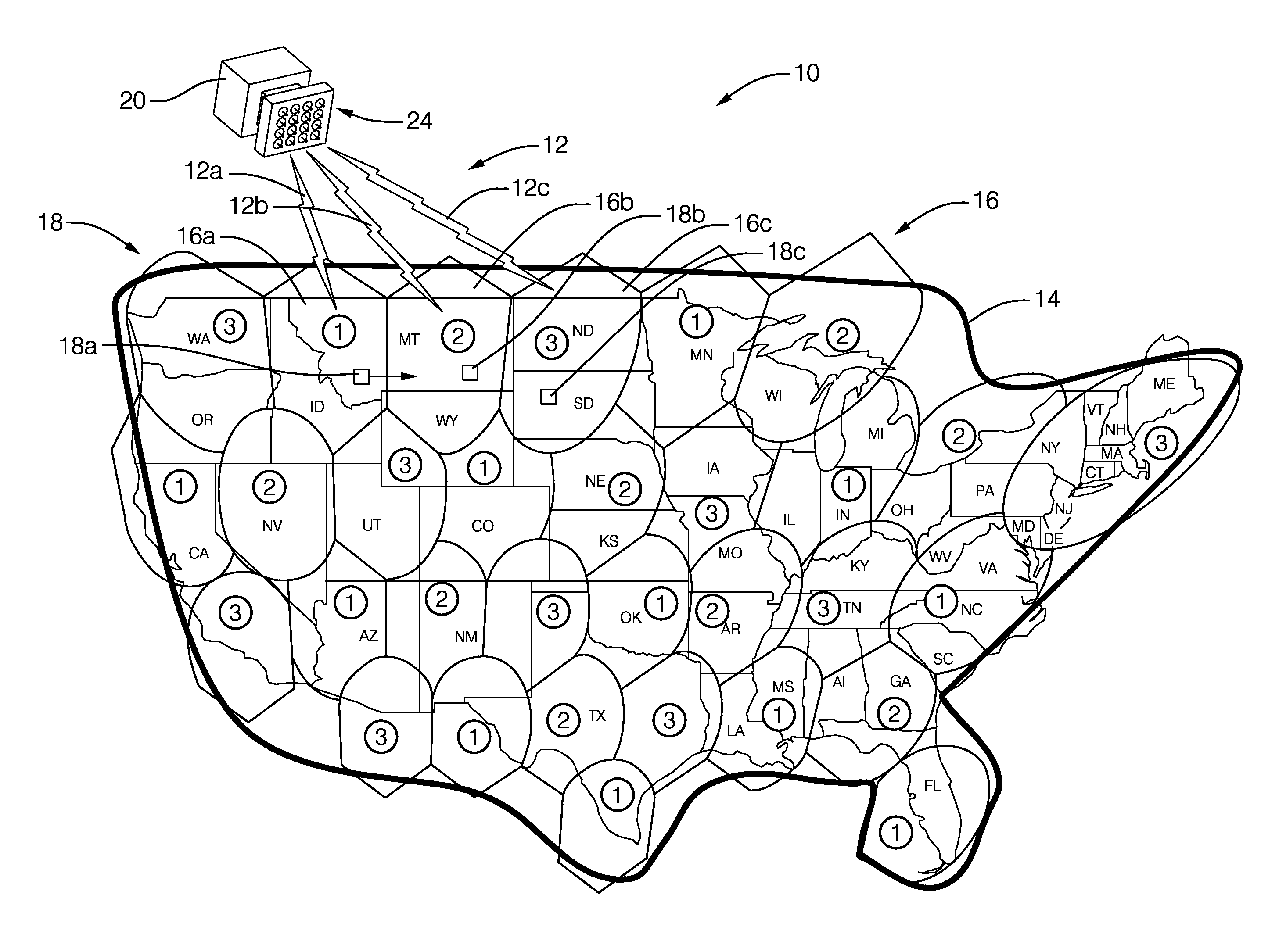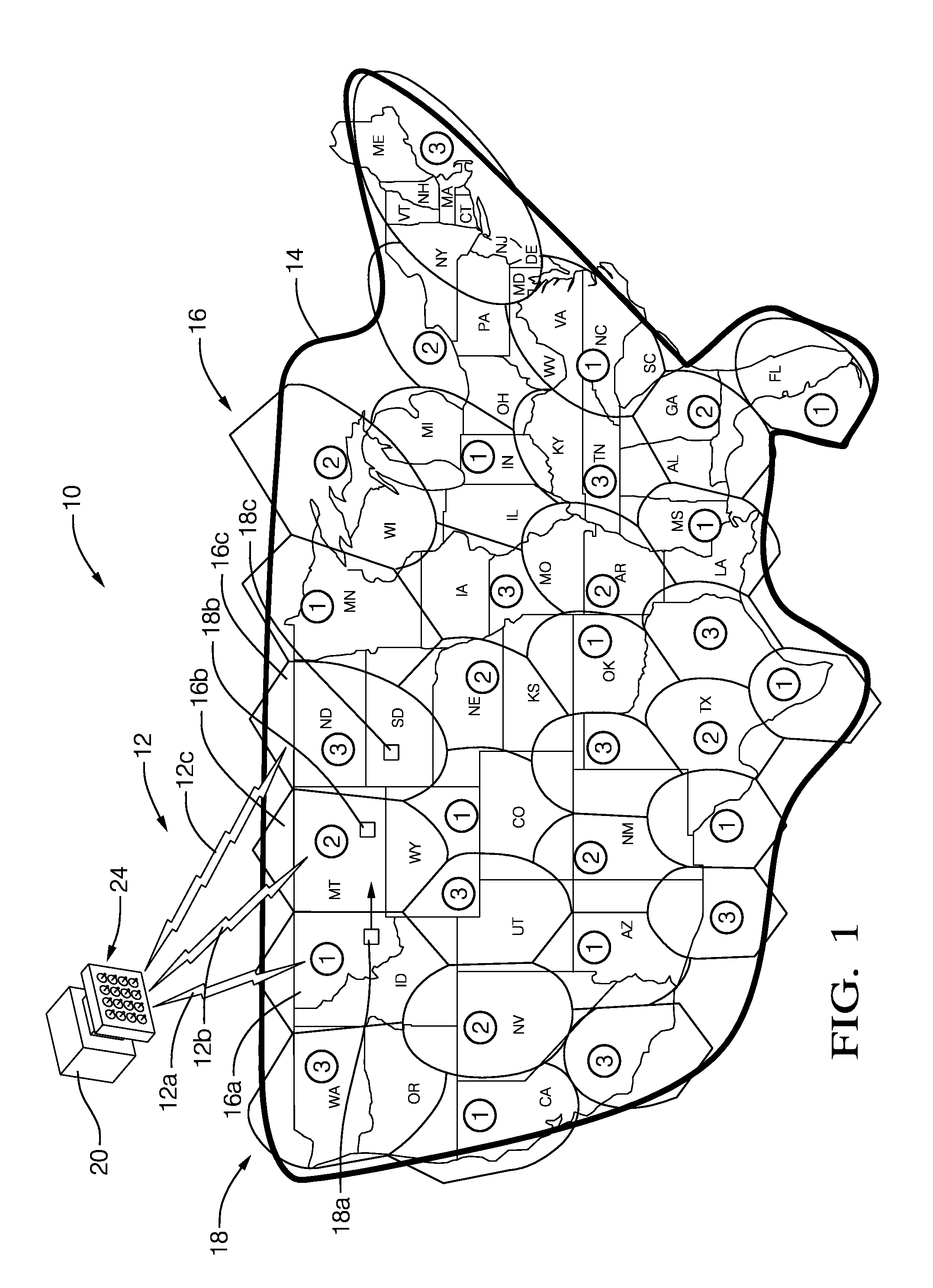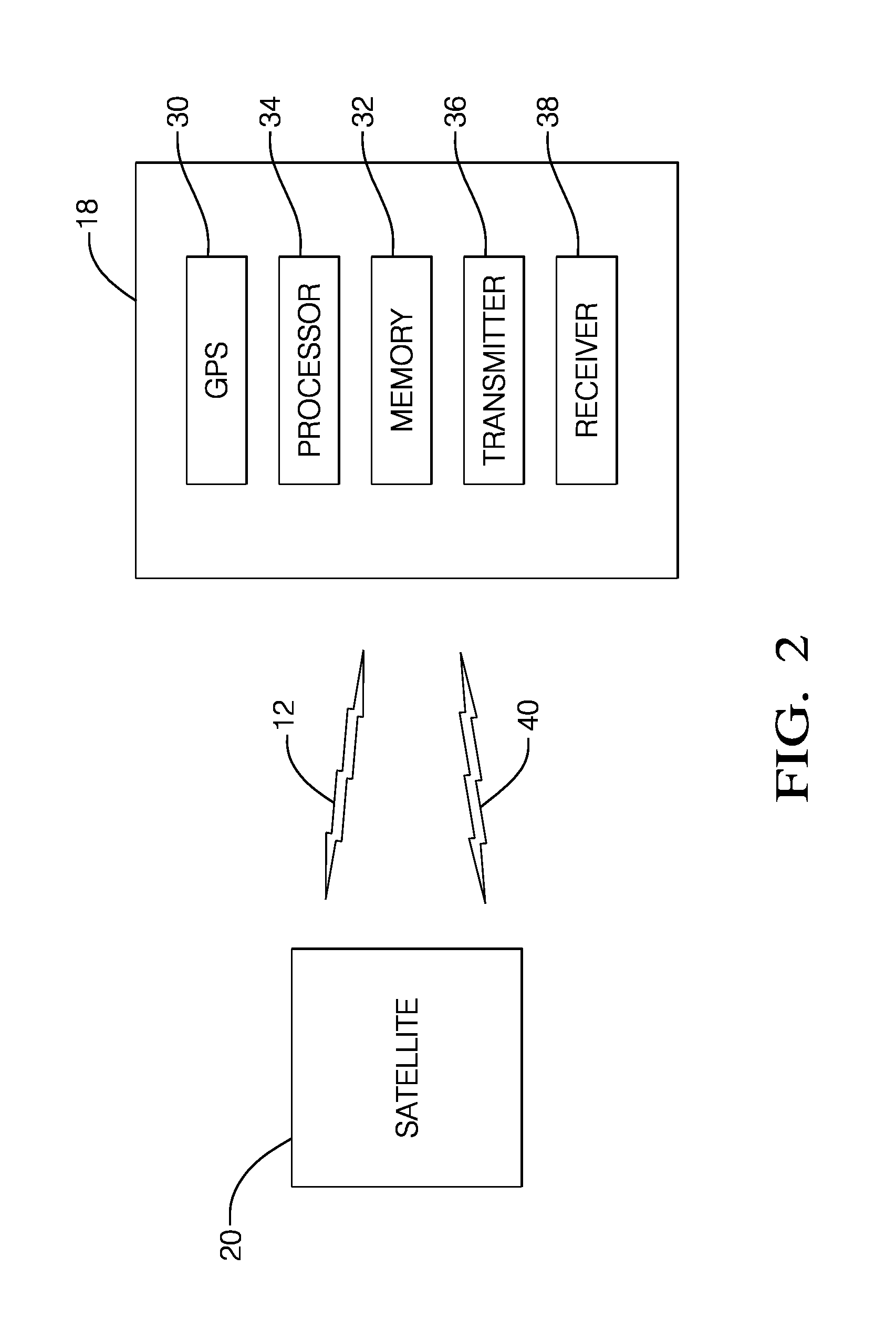Satellite communication system with time-multiplexed communication from spot beam defined sub-regions
a satellite communication system and sub-region technology, applied in the field of terrestrial/satellite communication systems, can solve the problems of satellite transceivers not being able to detect the message, reducing the communication bandwidth of each sub-region, and causing collisions, etc., to achieve the effect of increasing the occurrence of collisions
- Summary
- Abstract
- Description
- Claims
- Application Information
AI Technical Summary
Benefits of technology
Problems solved by technology
Method used
Image
Examples
Embodiment Construction
[0011]FIG. 1 illustrates a non-limiting example of a terrestrial / satellite communication system, hereafter the system 10. The system 10 includes a satellite 20 that is configured to preferentially receive signals 12 from each of a plurality of sub-regions 16 within a region 14 of communication of the satellite 20. As used herein, preferentially receive means that the satellite 20 is able to operate (i.e. focus) an antenna array 24 to selectively or preferentially receive, for example, a second signal 12b from a second sub-region 16b while ignoring or suppressing signals from adjacent sub-regions such as a first signal 12a from a first sub-region 16a, and a third signal 12c from a third sub-region 16c. In other words, the antenna array 24 is operable to define a plurality of spot beams that preferentially receive signals 12 from each of the plurality of sub-regions 16.
[0012]Operation of the antenna array 24 in this manner is sometimes referred to as spot beam forming, where the spot ...
PUM
 Login to View More
Login to View More Abstract
Description
Claims
Application Information
 Login to View More
Login to View More - R&D
- Intellectual Property
- Life Sciences
- Materials
- Tech Scout
- Unparalleled Data Quality
- Higher Quality Content
- 60% Fewer Hallucinations
Browse by: Latest US Patents, China's latest patents, Technical Efficacy Thesaurus, Application Domain, Technology Topic, Popular Technical Reports.
© 2025 PatSnap. All rights reserved.Legal|Privacy policy|Modern Slavery Act Transparency Statement|Sitemap|About US| Contact US: help@patsnap.com



